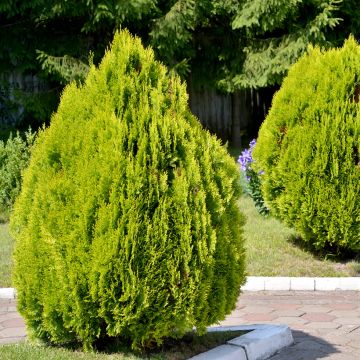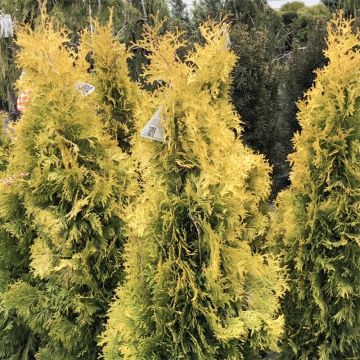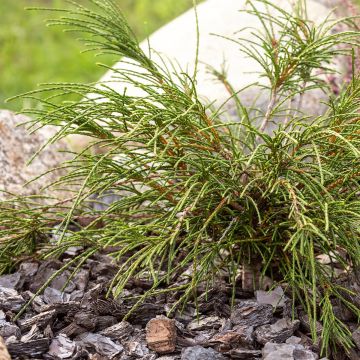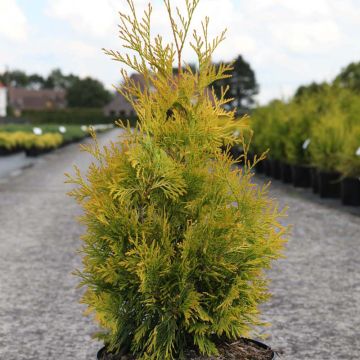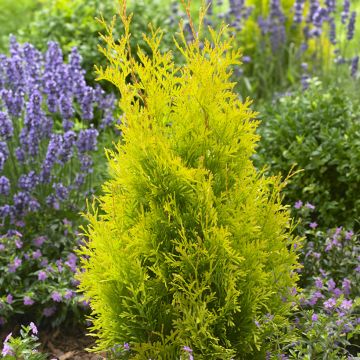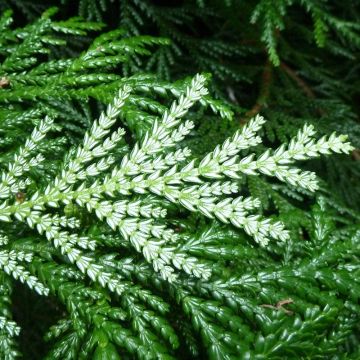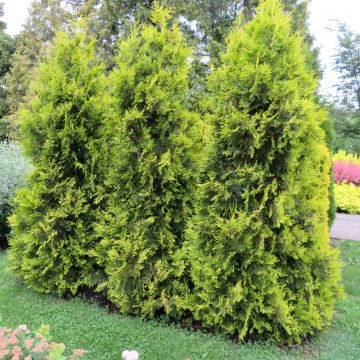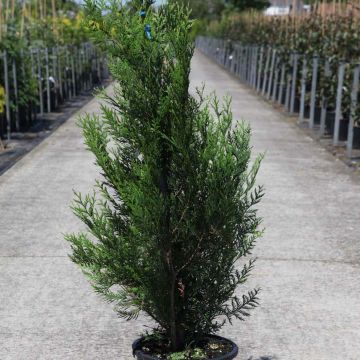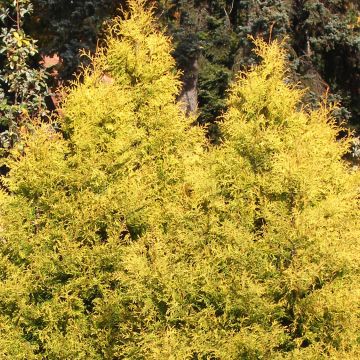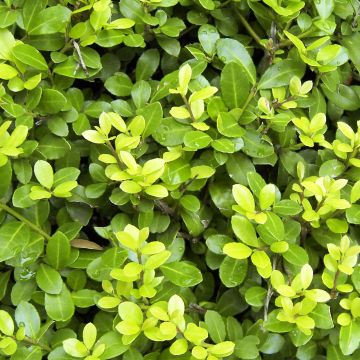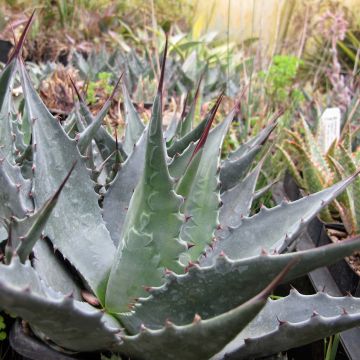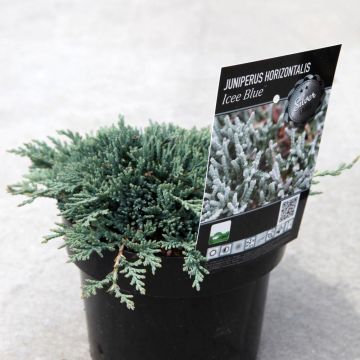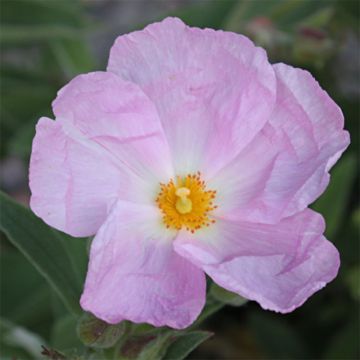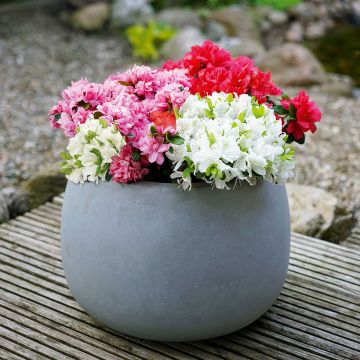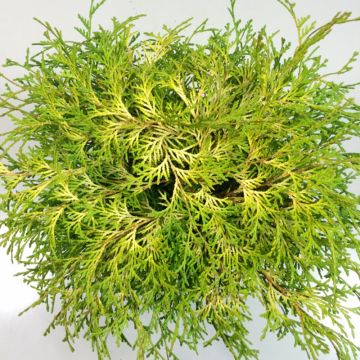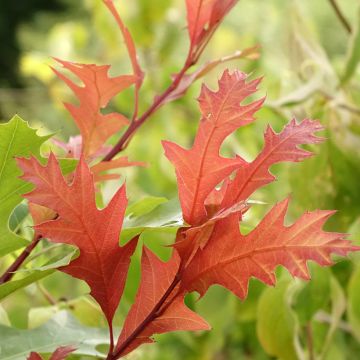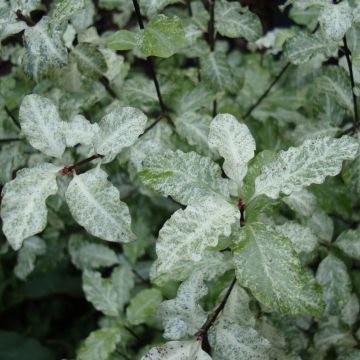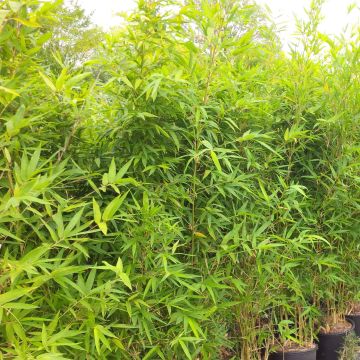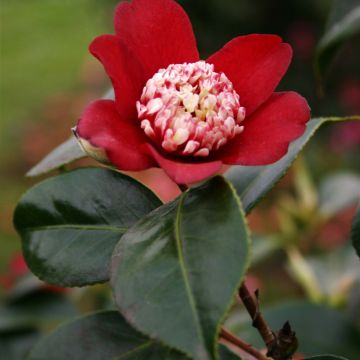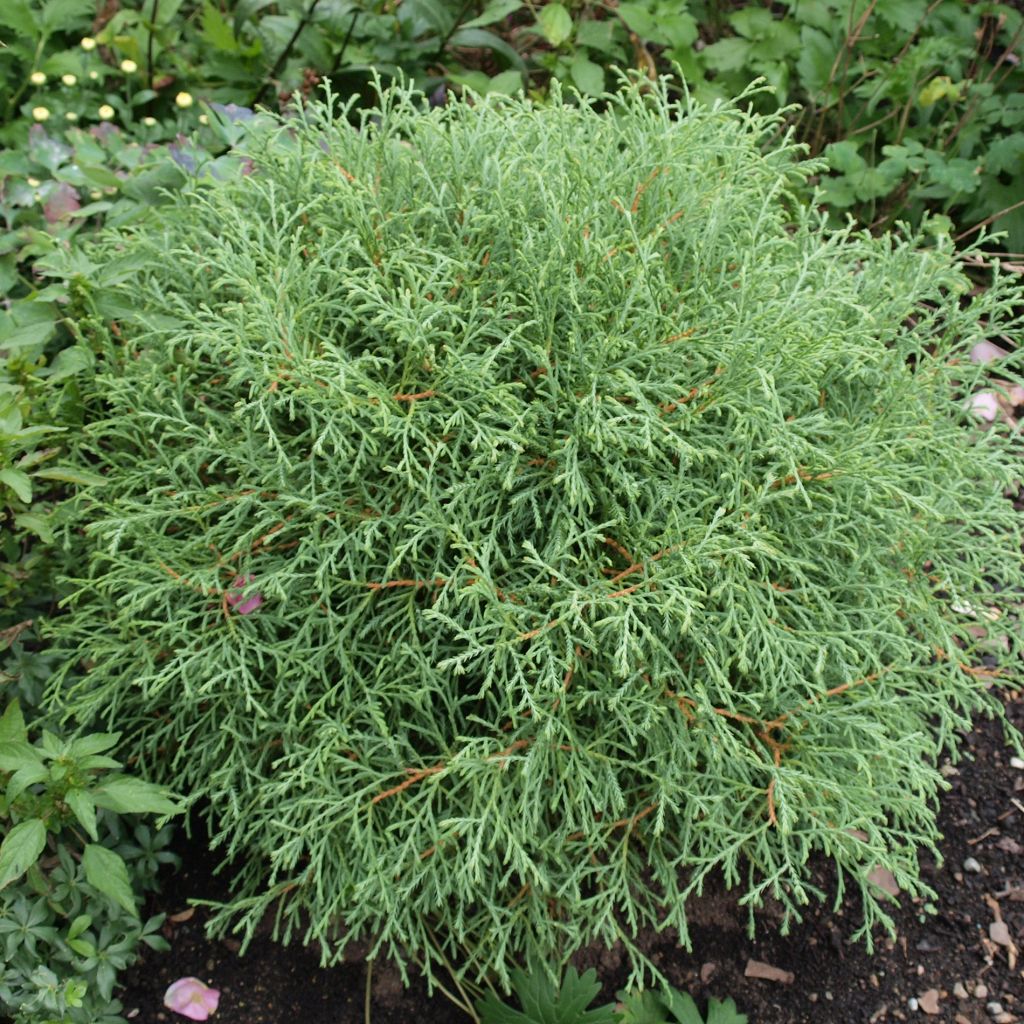

Thuja occidentalis Mr Bowling Ball - Canadian Arborvitae
Thuja occidentalis Mr Bowling Ball - Canadian Arborvitae
Thuja occidentalis Mr Bowling Ball 'Bobozam'
Eastern White Cedar, Northern White Cedar, American Arborvitae, Eastern Arborvitae
This item cannot be shipped to the selected country
Delivery charge from €5.90
Delivery charge from €5.90
Delivery charge from €5.90
More information
Schedule delivery date,
and select date in basket
This plant carries a 24 months recovery warranty
More information
We guarantee the quality of our plants for a full growing cycle, and will replace at our expense any plant that fails to recover under normal climatic and planting conditions.
From €5.90 for pickup delivery and €6.90 for home delivery
Express home delivery from €8.90.
From €5.90 for pickup delivery and €6.90 for home delivery
Express home delivery from €8.90.
From €5.90 for pickup delivery and €6.90 for home delivery
Express home delivery from €8.90.
Does this plant fit my garden?
Set up your Plantfit profile →
Description
Developing generally into a beautiful almost spherical feathery cushion Thuja occidentalis 'Bobozam Mr. Bowling Ball' stands out for its very small size and its thread-like, dense foliage, which is very soft and a delightful green-blue. Its modest size allows it to fit into a small garden, either in isolation or in a rockery. It is magnificent when planted alongside flowering shrubs and perennials in large borders. It is a very hardy conifer and is not demanding regarding soil type. It is happy in soft, well-drained but not too dry soil. It can even tolerate poor and chalky soil. This stunning little conifer prefers a sunny exposure.
Thuja occidentalis, also called Eastern Arborvitae or Northern White Cedar, is sometimes known as the Eastern White Cedar or Arborvitae. It is an evergreen conifer belonging to the cypress family and native to northeastern North America. In nature, it reaches a height of 15 m to 20 m (49.2 ft to 65.6 ft), adopting a beautiful conical habit, and a trunk covered with a decorative, reddish-brown and exfoliating bark. It is a very hardy species, well adapted to temperate climates and poor, moist or occasionally dry soils. Its almost rot-resistant, lightweight, fragrant and easily flammable wood is suitable for many uses. It has given rise to more than 300 cultivars that have been selected for their ornamental qualities.
Derived from this species, the variety 'Bobozam Mr. Bowling Ball', which can also be found under the name of 'Linesville', was discovered in a cemetery very close to Linesville, Pennsylvania. It is distinguished by its modest size, its well-rounded and regular habit and its very fine foliage in branchlets, which is delicately green-blue to watery green in colour. Its growth is slow, so it will reach a height of approximately 80 cm (31.5 in) with a spread of 90 cm (35.4 in). Like all arborvitaes, its foliage is aromatic when crushed. It is well-branched and dense, consisting of branches with multiple flattened branchlets, covered with overlapping scale-like leaves, giving the branchlets a flat appearance. The foliage is tender green and very bluish in spring, before taking on a soft grey-green or sage green shade over the seasons.
With its exceptional ornamental qualities and ease of cultivation, 'Mr. Bowling Ball' deserves to be planted more often. It adapts to everything except dense shade and waterlogged soils. Its round and gentle silhouette is intended to enhance any decor, in borders with small, undemanding shrubs such as cotoneasters or rosemary, as well as in rockeries. It is the perfect choice for a small garden, on a large slope, among rocks or near a swimming pool, as it blends well with the geometric lines of masonry works. It can also be planted to overhang a low wall, or to highlight a rocky scree. The visual qualities of conifers suit the design of a contemporary garden, which prefers the aesthetics of shapes, silhouettes and textures to the daintiness of flowers. 'Mr Bowling Ball' is a perfect alternative to trimmed boxwood, and can be used to mark pathways or border terraces. Conifers also add permanence to the structure of a flowerbed. The key is to play with volumes and colours.
Report an error about the product description
Thuja occidentalis Mr Bowling Ball - Canadian Arborvitae in pictures
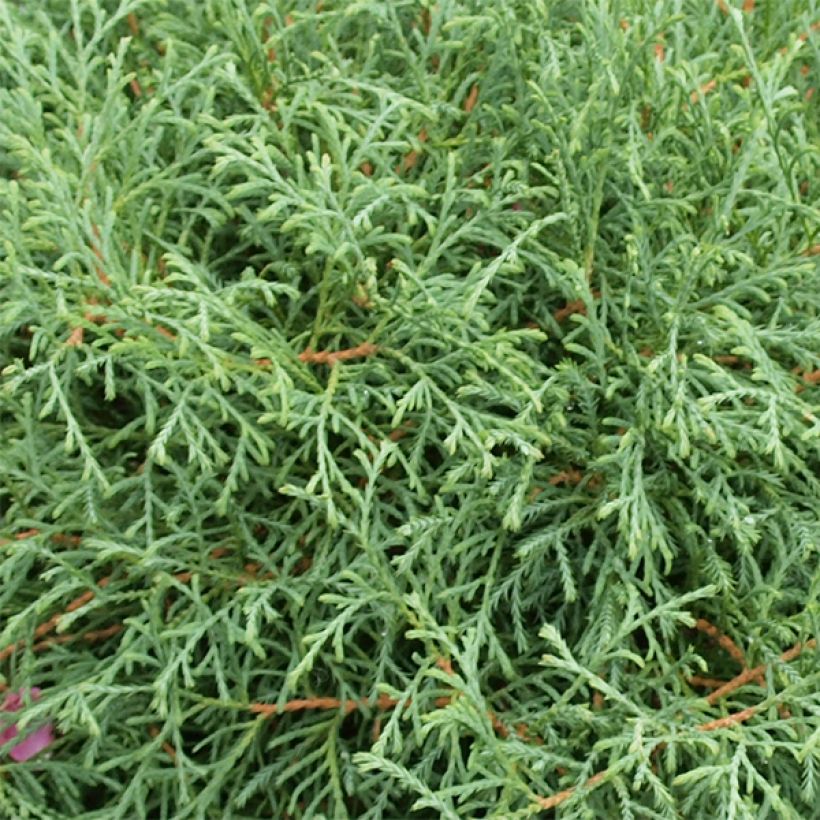

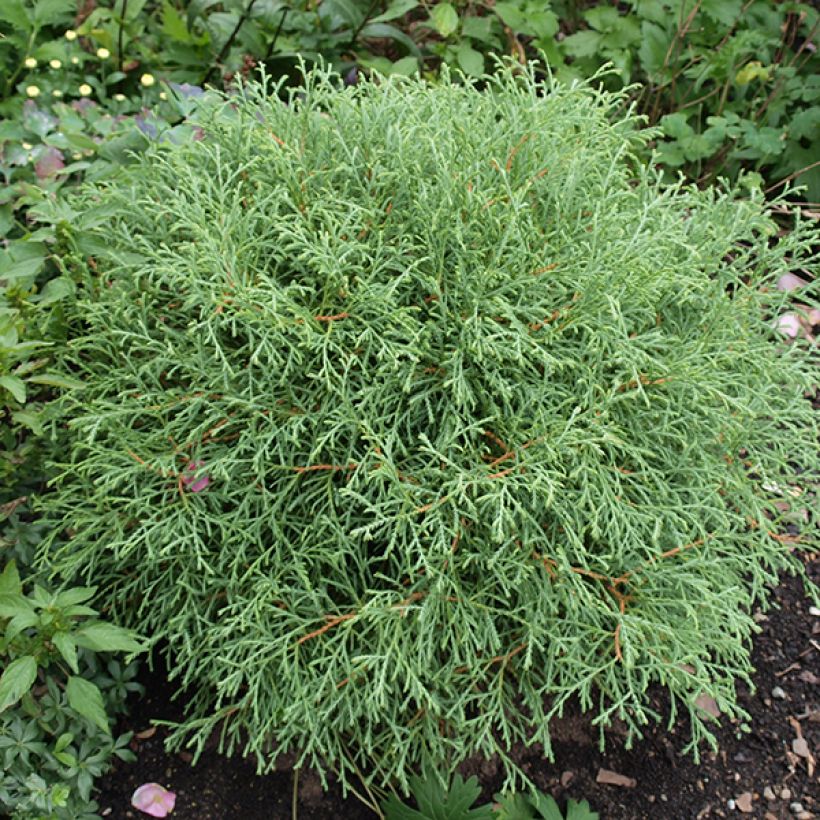

Plant habit
Foliage
Botanical data
Thuja
occidentalis
Mr Bowling Ball 'Bobozam'
Cupressaceae
Eastern White Cedar, Northern White Cedar, American Arborvitae, Eastern Arborvitae
Cultivar or hybrid
Other Thuya - Thuja
Planting and care
Plant Thuja occidentalis 'Mr Bowling Ball' from September to November and from February to June in deep, ordinary, but loose and not too heavy, neutral or even calcareous soil. Ensure the soil is not too dry but slightly moist. It prefers loamy, slightly calcareous soils. It cannot tolerate scorching temperatures and prolonged drought, although it can deal with occasional summer drought once well established. However, it requires a sunny exposure (or partial shade in hot climates) to develop well. Soak the root balls well before planting. If required, add organic matter at planting. Water generously in the first years, especially during prolonged drought. In very poor soil, you can apply special conifer fertiliser every year in April and weed the soil in summer. This hardy conifer (up to -25° C (-13° F) at least) does not require pruning to maintain its regular habit.
Planting period
Intended location
Care
-
, onOrder confirmed
Reply from on Promesse de fleurs
Evergreen shrubs
Haven't found what you were looking for?
Hardiness is the lowest winter temperature a plant can endure without suffering serious damage or even dying. However, hardiness is affected by location (a sheltered area, such as a patio), protection (winter cover) and soil type (hardiness is improved by well-drained soil).

Photo Sharing Terms & Conditions
In order to encourage gardeners to interact and share their experiences, Promesse de fleurs offers various media enabling content to be uploaded onto its Site - in particular via the ‘Photo sharing’ module.
The User agrees to refrain from:
- Posting any content that is illegal, prejudicial, insulting, racist, inciteful to hatred, revisionist, contrary to public decency, that infringes on privacy or on the privacy rights of third parties, in particular the publicity rights of persons and goods, intellectual property rights, or the right to privacy.
- Submitting content on behalf of a third party;
- Impersonate the identity of a third party and/or publish any personal information about a third party;
In general, the User undertakes to refrain from any unethical behaviour.
All Content (in particular text, comments, files, images, photos, videos, creative works, etc.), which may be subject to property or intellectual property rights, image or other private rights, shall remain the property of the User, subject to the limited rights granted by the terms of the licence granted by Promesse de fleurs as stated below. Users are at liberty to publish or not to publish such Content on the Site, notably via the ‘Photo Sharing’ facility, and accept that this Content shall be made public and freely accessible, notably on the Internet.
Users further acknowledge, undertake to have ,and guarantee that they hold all necessary rights and permissions to publish such material on the Site, in particular with regard to the legislation in force pertaining to any privacy, property, intellectual property, image, or contractual rights, or rights of any other nature. By publishing such Content on the Site, Users acknowledge accepting full liability as publishers of the Content within the meaning of the law, and grant Promesse de fleurs, free of charge, an inclusive, worldwide licence for the said Content for the entire duration of its publication, including all reproduction, representation, up/downloading, displaying, performing, transmission, and storage rights.
Users also grant permission for their name to be linked to the Content and accept that this link may not always be made available.
By engaging in posting material, Users consent to their Content becoming automatically accessible on the Internet, in particular on other sites and/or blogs and/or web pages of the Promesse de fleurs site, including in particular social pages and the Promesse de fleurs catalogue.
Users may secure the removal of entrusted content free of charge by issuing a simple request via our contact form.
The flowering period indicated on our website applies to countries and regions located in USDA zone 8 (France, the United Kingdom, Ireland, the Netherlands, etc.)
It will vary according to where you live:
- In zones 9 to 10 (Italy, Spain, Greece, etc.), flowering will occur about 2 to 4 weeks earlier.
- In zones 6 to 7 (Germany, Poland, Slovenia, and lower mountainous regions), flowering will be delayed by 2 to 3 weeks.
- In zone 5 (Central Europe, Scandinavia), blooming will be delayed by 3 to 5 weeks.
In temperate climates, pruning of spring-flowering shrubs (forsythia, spireas, etc.) should be done just after flowering.
Pruning of summer-flowering shrubs (Indian Lilac, Perovskia, etc.) can be done in winter or spring.
In cold regions as well as with frost-sensitive plants, avoid pruning too early when severe frosts may still occur.
The planting period indicated on our website applies to countries and regions located in USDA zone 8 (France, United Kingdom, Ireland, Netherlands).
It will vary according to where you live:
- In Mediterranean zones (Marseille, Madrid, Milan, etc.), autumn and winter are the best planting periods.
- In continental zones (Strasbourg, Munich, Vienna, etc.), delay planting by 2 to 3 weeks in spring and bring it forward by 2 to 4 weeks in autumn.
- In mountainous regions (the Alps, Pyrenees, Carpathians, etc.), it is best to plant in late spring (May-June) or late summer (August-September).
The harvesting period indicated on our website applies to countries and regions in USDA zone 8 (France, England, Ireland, the Netherlands).
In colder areas (Scandinavia, Poland, Austria...) fruit and vegetable harvests are likely to be delayed by 3-4 weeks.
In warmer areas (Italy, Spain, Greece, etc.), harvesting will probably take place earlier, depending on weather conditions.
The sowing periods indicated on our website apply to countries and regions within USDA Zone 8 (France, UK, Ireland, Netherlands).
In colder areas (Scandinavia, Poland, Austria...), delay any outdoor sowing by 3-4 weeks, or sow under glass.
In warmer climes (Italy, Spain, Greece, etc.), bring outdoor sowing forward by a few weeks.

































